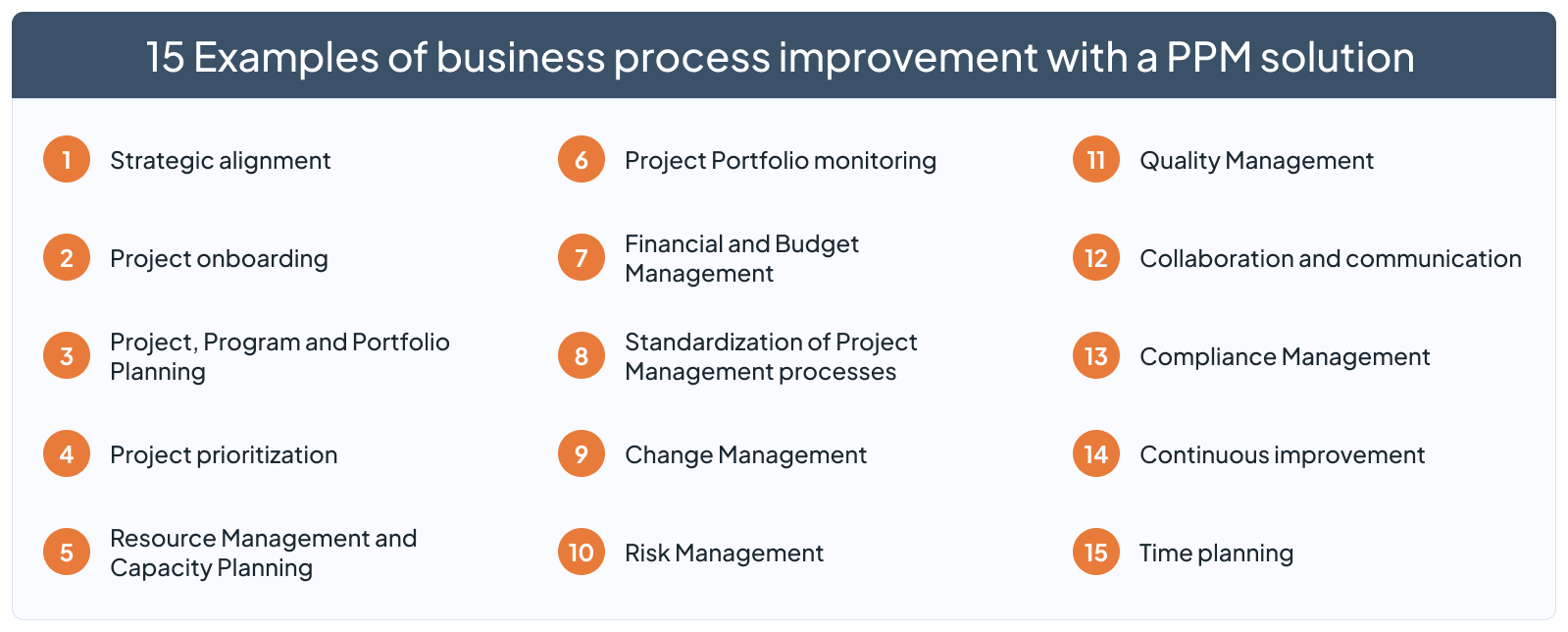15 examples of process improvement with a PPM solution

Are you looking to improve the efficiency of your business processes? Process optimization is a fundamental pillar for any organization that aspires to achieve its goals efficiently and profitably. In this sense, Project Portfolio Management (PPM) software emerges as an indispensable ally.
But what is a PPM software and how can it transform the way your company manages its projects? In this post, we will explore in detail 15 real-world examples of how a PPM solution can transform and optimize your business processes.
What is a PPM software? Scope and key features
A PPM software is a comprehensive solution that enables organizations to manage their project and product portfolios efficiently. It serves as a central repository from which you can plan, execute, monitor and manage projects, programs and portfolios and align them with strategic objectives.
More and more organizations are taking advantage of the benefits provided by these types of solutions, which include:
- Better decision-making: You gain real-time visibility into project performance, risks, and resource usage. This allows you to make informed decisions based on data.
- Higher project success rate: You’ll be able to proactively identify and address potential risks, ensuring that projects stay on track, meet established deadlines, and deliver expected outcomes.
- Cost reduction and improved efficiency: Eliminate unnecessary expenses, optimize resource allocation, and streamline processes to save time and money.
- Enhanced collaboration and communication: It lays the groundwork for breaking down silos and fostering smooth collaboration among teams, stakeholders, and external partners.

PROJECT PORTFOLIO MANAGEMENT
Stop Wasting Time, Start Delivering Results
Discover Triskell PPM solution
Key features of project portfolio management tools
With a PPM software, you will take full control of all your organization’s projects thanks to its suite of functionalities:
- Project planning: create project plans, define tasks, and establish dependencies so that projects are executed within agreed budgets and deadlines.
- Resource Management and Capacity Planning: plan resource allocation based on incoming demand, track resource usage, and identify conflicts and bottlenecks.
- Financial management: track project costs, budgets and profitability to make informed financial decisions.
- Strategic planning: prioritize your organization’s projects and programs based on strategy, monitor the performance of project portfolios, and plan medium- and long-term capacity.
- Reporting and analysis: generate reports for executives and other stakeholders on the performance of project portfolios, identify trends and make data-driven decisions.
- Customization: Some PPM tools are so flexible that you can adapt them to the changing needs and specific processes of your organization.
- Integration with other tools: you can integrate the solution with the ERP, CRM or Project Management systems you are already using in your organization.
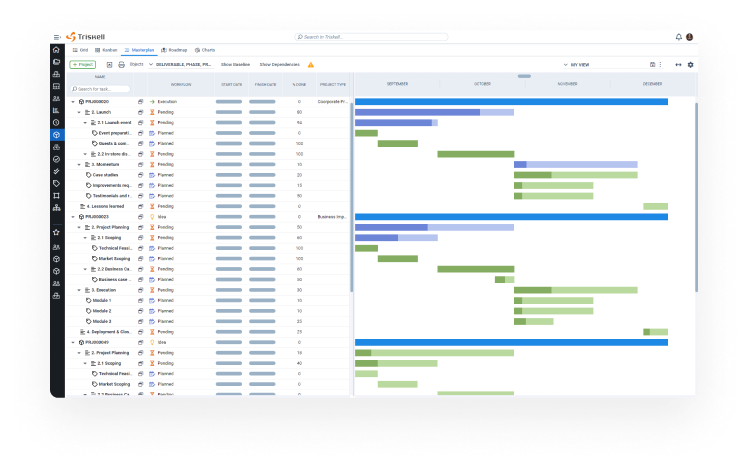
How PPM tools can help to identify and improve business processes
In today’s hectic business landscape, organizations are constantly looking for ways to work smarter, not harder. Optimizing operations and achieving strategic objectives are top priorities, and process optimization has become a key weapon in this battle.
And this is where a PPM platform becomes your main ally. These tools go much further than other Project Management solutions you may have heard of. They provide a central hub for managing all project portfolios, from the first spark of an idea to its successful completion.
They are tools that are ultimately designed to optimize all management and governance processes in your organization. From the most detailed project details to the overall strategy of all the company’s project portfolios and portfolios, you can have it all at your fingertips on a single platform.
EBOOK
PPM Software Buyers’ Guide
What should you look for in a new PPM tool?
10 Examples of business process improvement with a PPM solution
That said, let’s get down to business and unravel all the business processes that you can optimize with project portfolio management software. These are as follows:
1. Strategic alignment
The first process that you can optimize with a tool of this kind is the alignment of project portfolios with the overall strategic objectives. You have probably witnessed how projects in your organization are prioritized based on individual objectives or departmental needs, leaving aside the mission and vision of the business. Or initiatives that do have a strategic priority do not go ahead because there are not enough resources or budget available.
A PPM software helps to close this gap between strategic planning and execution by:
- Facilitating the definition of strategic objectives.
- Allowing the selection and prioritization of projects based on how aligned they are with the overall strategy.
- Providing visual tools to visualize and track the achievement of overall objectives.
2. Project onboarding
The processes of requesting and registering a new project are a real headache. And they are not only because they involve many manual and time-consuming activities, such as creating the project request, assigning teams or resources, but also because many of these processes are carried out in disjoint tools, which can cause:
- Delays in projects.
- Conflicts in resource allocation.
- Lack of clarity when determining project priorities or objectives.
With a PPM platform you will be able to streamline this process because:
- It allows you to automate tasks such as project creation, team designation or resource allocation.
- You will be able to centralize and standardize your organization’s demand and project request procedures, thus achieving consistency and efficiency.
- It facilitates the establishment of clear priorities and objectives for each project from the beginning.
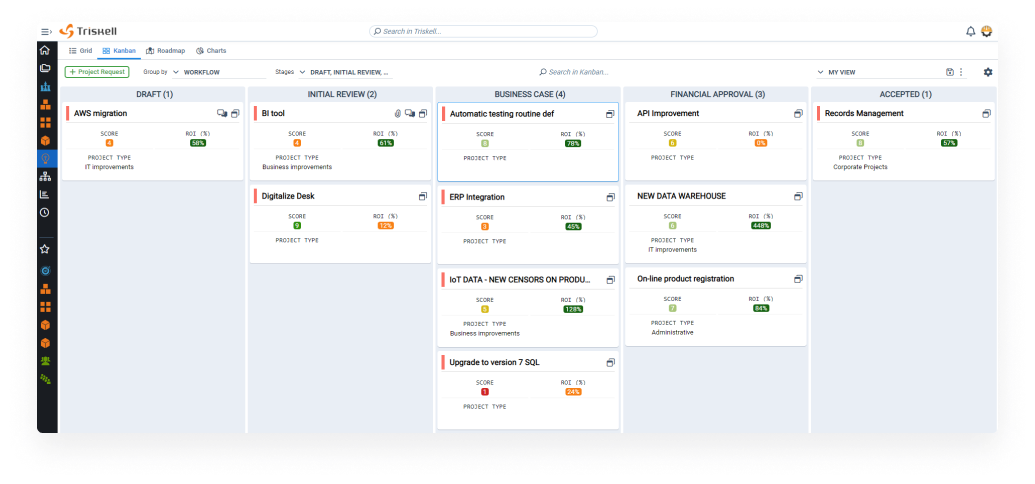
3. Project, Program and Portfolio Planning
As in the previous process, if you don’t have a centralized PPM platform, planning your business projects, programs and portfolios will be a fragmented and disconnected process. The consequence? Delayed timelines, resource conflicts, or lack of alignment between projects and overall strategic objectives are just a few.
How does a PPM solution help optimize this process?
- By enabling the creation of schedules and roadmaps that consider all levels of each project portfolio in the business.
- Streamlining the allocation of resources across multiple projects and ensuring that resources are used efficiently.
- Facilitating collaboration between PMO, project teams, departments and other stakeholders involved in the management of your organization’s portfolios.
4. Project prioritization
If PMOs and Portfolio Managers do not have a structured process for prioritizing all the projects and initiatives, they will have difficulty selecting the projects that align with the overall objectives and deliver the greatest ROI.
In contrast, a PPM software makes project prioritization easy and data-driven. How?
- By establishing clear prioritization criteria aligned with strategic objectives, financial viability, resource availability, or risk assessment.
- By using scoring models and prioritization matrices that help you to objectively evaluate projects based on the defined criteria.
- By allowing the early identification of potential conflicts when prioritizing some initiatives over others.
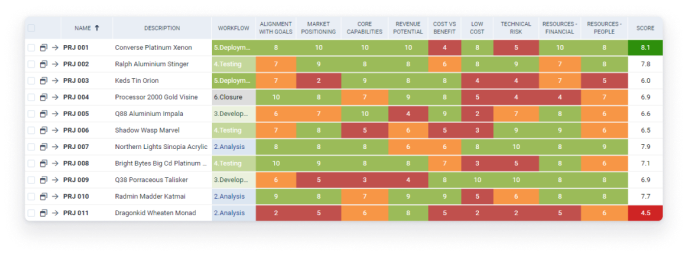
5. Resource Management and Capacity Planning
Resource Management is an essential process for the correct performance of the project and product portfolios of any business. Without efficient processes to plan and allocate resources, this can result in:
- Project delays.
- Cost overruns.
- Decreased team productivity.
- Resource conflicts.
- Failure to meet deadlines.
- Etc.
A PPM software helps you optimize all your Resource Management and Capacity Planning processes by:
- Providing real-time visibility into resource availability.
- Allowing you to match resource skills and expertise based on project requirements.
- Predicting future resource needs based on incoming demand.
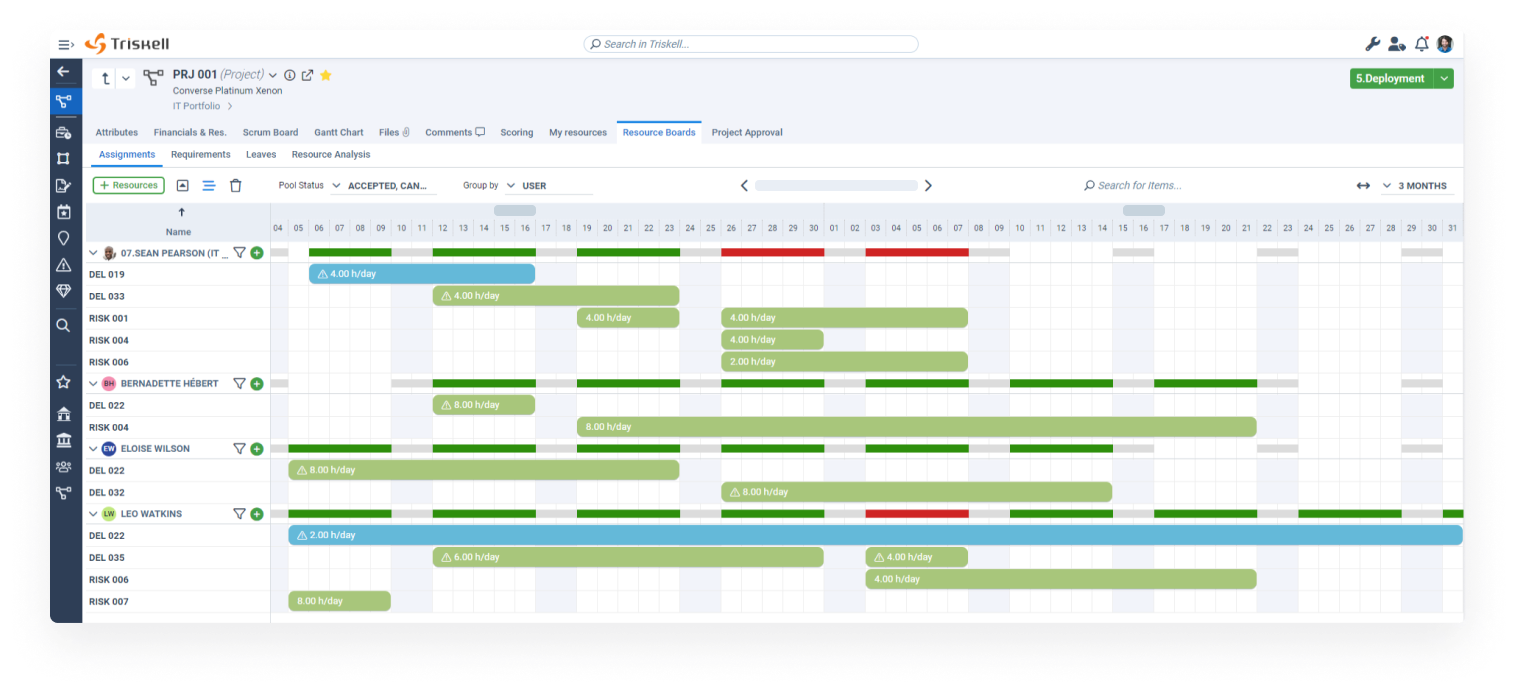
6. Project Portfolio monitoring
Proactively monitoring project and product portfolios is essential. This helps to avoid resource over-allocation, missed opportunities and to ensure that projects are always aligned with objectives.
And how does PPM software help you optimize this process? In many ways:
- You can establish in the tool itself the KPIs and metrics you use in your organization to monitor the performance of your portfolios.
- Generating reports that show insights into the overall health of each project portfolio, resource utilization, budget management, alignment with strategy, etc.
- They have a system of alerts and notifications to proactively identify potential problems, deviations from objectives, or emerging risks.
Learn how to boost Project Planning and Management
Request a personal demo to get a clear view of how you can better plan, execute and prioritize with Triskell.
7. Financial and Budget Management
Without efficient Financial and Budget Management processes, your projects run the risk of incurring cost overruns, financial uncertainty, and thus affecting project scope and objectives.
Not all PPM tools, however, have the capabilities to plan, manage and monitor project portfolio finances. But there is a small group of them that will allow you to:
- Manage the CAPEX and OPEX of all your initiatives through budget tracking, fund allocation and cost forecasting.
- Align your project budget and financial management processes with strategic business objectives.
- Obtain real-time visibility to identify potential cost overruns and forecast project profitability.

8. Standardization of Project Management processes
The lack of consolidated Project Management practices across the organization can lead to inefficiencies, rework, bottlenecks or non-compliance with industry standards.
A PPM solution facilitates the standardization of Management and Governance processes by:
- Transferring to the tool itself the Project Management processes you already use in your organization, whether they are Agile, Waterfall, PMI, PMBOK, Lean, ITIL Phase-Gate, SAFe, etc.
- Allowing to define customized workflows and project management templates to ensure that projects are executed following the established procedures and standards.
- Enabling hybrid project management, allowing you to combine different management methodologies according to the project objectives and needs.
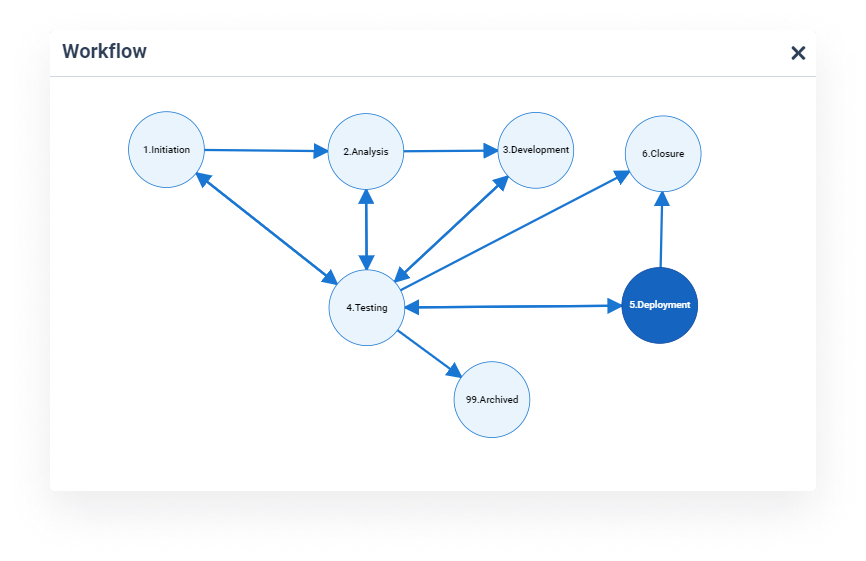
9. Change Management
Change management, often undervalued, is another fundamental process. Without efficient Change Management, your organization will run the risk of project delays, scope variations, lower success rates and, worst of all, dissatisfied customers and stakeholders.
A PPM software with advanced Scenario Simulation capabilities allows you to simulate the impact of requested changes in your project portfolios. Thanks to scenario simulation you will be able to:
- Analyze the feasibility of proposed changes.
- Identify potential risks and mitigate them proactively.
- Compare different scenarios and select the one that best suits the priorities of each project portfolio and strategic objectives.
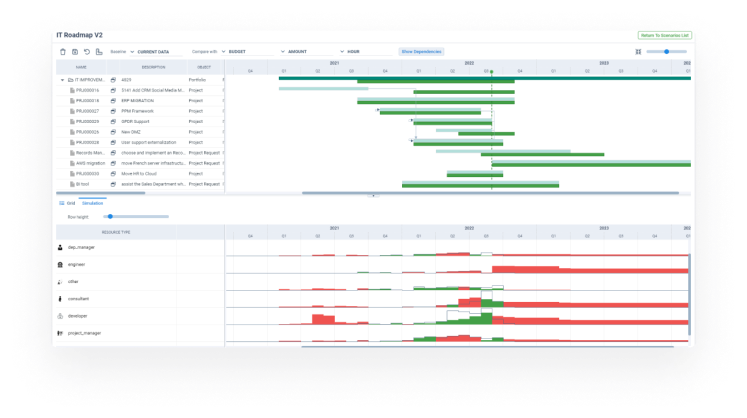
10. Risk Management
As with change management, risk management can seriously harm your organization’s performance by causing:
- Project delays.
- Unexpected costs.
- Resource cuts.
- Increased likelihood of project failure.
A PPM software will help you define a structured framework for Risk Management with which you can:
- Employ risk identification techniques to proactively identify potential risks that may affect project objectives, timelines or budgets.
- Evaluate the likelihood and potential impact of each identified risk to prioritize risk mitigation efforts.
- Create and implement risk mitigation strategies to reduce the likelihood or impact of identified risks.
- Monitor and track the status of identified risks, update mitigation plans as needed, and report on risk management progress.
11. Quality Management
Gone are the days when the only success factors in project management were delivering projects on time and on budget. Today, delivering high quality projects is essential for customer satisfaction, brand reputation, and competitive advantage.
A PPM software will help you to streamline the quality management of your initiatives by enabling you to:
- Define clear quality standards and expectations for the deliverables of each project.
- Integrate quality control activities into your organization’s workflows.
- Monitor quality indicators to identify areas for improvement and apply corrective actions.
12. Collaboration and communication
In order for project portfolio management to perform as expected, a collaborative and communicative environment between project teams, departments and stakeholders must be fostered.
PPM software will make this collaborative environment possible by:
- Providing a centralized platform from which to share information, discuss tasks, and stay updated on project progress.
- Facilitating real-time communication to keep everyone informed and aligned.
- Providing a secure environment from which to manage file sharing and ensure easy access to documentation related to each project.
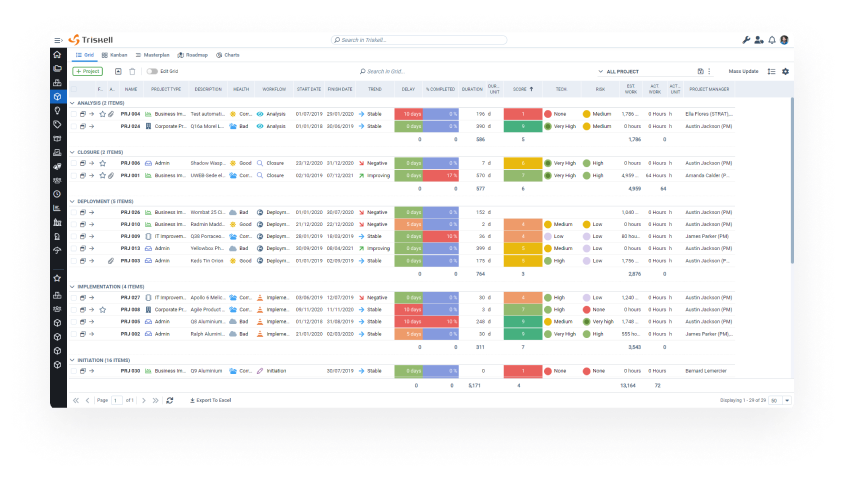
13. Compliance Management
Successfully addressing the complexities surrounding regulations is one of the most time-consuming processes. But it is indispensable to prevent the organization from incurring regulatory non-compliance, legal problems, reputational damage or project disruptions.
A PPM tool can help you manage compliance because:
- It functions as a centralized repository to store all information related to compliance requirements (regulations, industry guidelines, internal policies, etc.).
- You can link compliance requirements to specific projects, tasks or deliverables for each project, program or portfolio.
14. Continuous improvement
Having continuous improvement processes in place is essential to prevent your organization from running the risk of stagnating, missing opportunities, having inefficient processes and, ultimately, losing competitiveness.
And, with the help of a PPM solution, it will enable you to optimize your existing continuous improvement processes in a variety of ways:
- Document lessons learned, mistakes and best practices from completed projects to improve for future projects and drive process improvement initiatives.
- Monitor and analyze performance metrics to identify areas for improvement in each of your PPM management processes.
- It will help you foster an organizational culture based on continuous learning and knowledge sharing, thus promoting continuous improvement and innovation.
15. Time planning
Last but not least, time management is a critical process for project management. It is a critical process for project management, because if neglected it will lead to project delays, resource conflicts and a lower project success rate.
With a PPM software, time planning will no longer be a problem, as it allows you to:
- Develop comprehensive schedules for your projects, programs or portfolios that break down all tasks, dependencies, and how resources are allocated to each task.
- Identify potential delays or bottlenecks at an early stage and take corrective action to ensure that projects stay on track.
- Take full advantage of Gantt charts and other visual tools to clearly see project schedules, dependencies and key milestones.
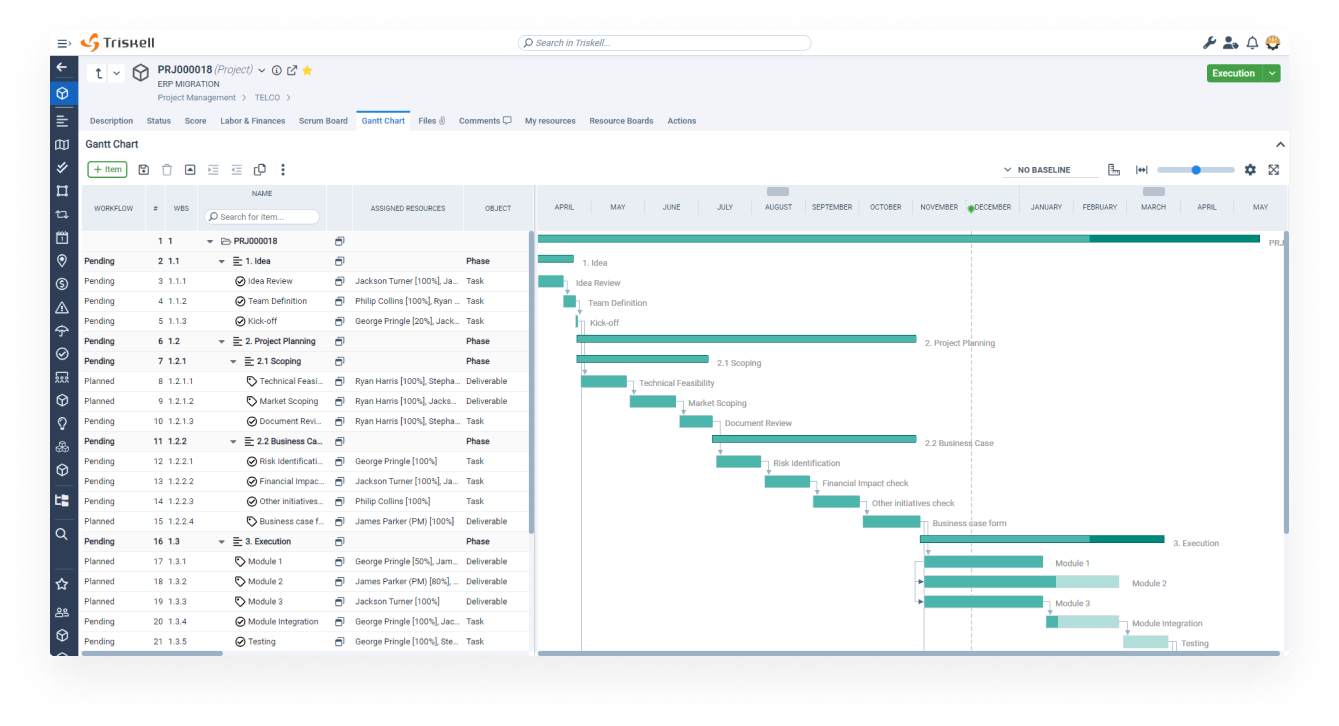
Conclusion: leverage Triskell for process improvement
Today’s business landscape demands agility. Silos and fragmented traditional processes have no place, as they make it difficult for companies to keep pace and hinder strategic alignment and operational efficiency.
All the processes discussed here make it clear how vital it is for medium and large companies to have PPM software. This is not only because of the holistic view it provides on project portfolios, but also because of how it facilitates decision making and continuous improvement.
Now, you need to take the next step and take action. Discover how Triskell Software can help your organization align strategy and execution, optimize resource management, and ensure project and product delivery focused on business value.
Request a demo of Triskell Software
Triskell meets all the requirements for your organization’s PMO to take a step forward in aligning your project portfolio with strategic planning.
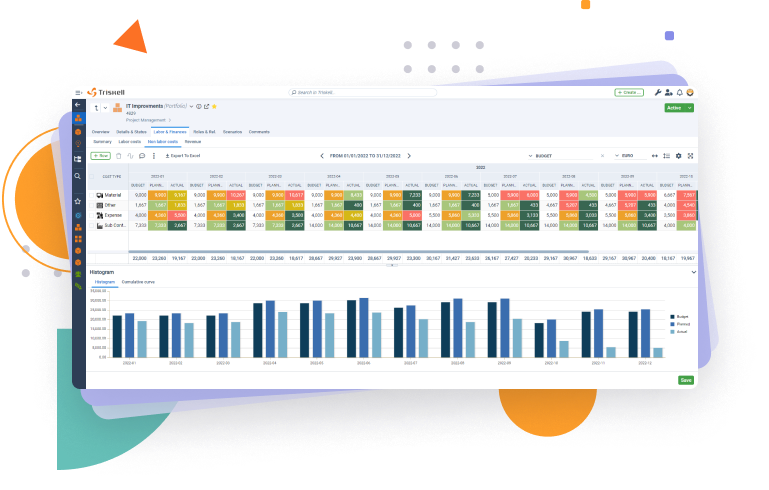
Related Content

10 types of Project Management Offices (PMO): structure, purpose and how to choose the right one
Learn about different PMO types, their governance levels, and which one is the best fit for your company’s project management needs.

How to create a project budget: methods and techniques for effective project budgeting
Learn how to create a project budget with this detailed guide. Discover essential methods and techniques for effective project budgeting in PPM.

20 strategic planning models and tools for medium and large companies
Looking for the best strategic planning frameworks? This guide covers 20 proven models to enhance decision-making and business growth.
FAQs about process improvement examples
What are some examples of process improvement that show the advantages of using PPM software over traditional project management tools?
Process improvement examples that highlight the advantages of PPM software over traditional project management tools include strategic alignment of projects with business goals, centralized resource management, and real-time financial oversight across multiple projects.
These features enable organizations to manage their portfolios more effectively, ensuring that projects contribute to overall business objectives and are completed within budget and on time.
How does PPM software integrate with other tools to support process improvement in an organization?
PPM software typically offers integration capabilities with other enterprise tools like ERP, CRM, and existing project management systems. This integration is crucial for process improvement, as it allows for centralized data management, streamlined workflows, and enhanced visibility across the entire project portfolio.
These integrations ensure that all relevant information is easily accessible, leading to better decision-making and more efficient processes.
Are there process improvement examples that demonstrate the impact of PPM software on continuous improvement efforts?
Process improvement examples related to continuous improvement with PPM software include documenting lessons learned from past projects, monitoring key performance indicators (KPIs) to identify inefficiencies, and fostering a culture of continuous learning.
PPM software helps organizations track and analyze these factors, allowing them to refine processes and improve overall project outcomes over time.
